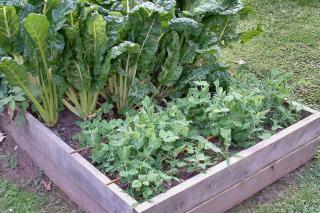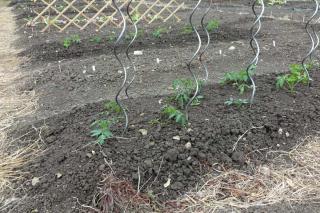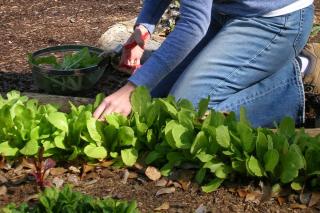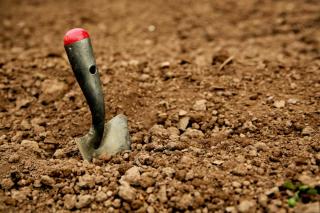

Been wanting to start a veggie patch but not sure how get started? Find out how to start your first vegetable patch in 6 key steps!
All our growing tips, for each vegetable, can be found in our Vegetable patch section.

If your plot has an area that’s flatter than the rest, choose that spot because it’ll be easier to cultivate. However, it’s also perfectly possible to grow your vegetables along a slope or even to set up a series of terraces that are more or less narrow.
For those who might not have much space outdoors, you should know there are lots of raised planters that will fit right in on any deck or balcony.
It’s important to know your type of soil well before planting. Indeed, sometimes soil is too poor and will need mulch and organic fertilizer, whereas these two things would suffocate plants if you added them to clay soil. Soil is usually in one of three categories:
 Sandy soil: this type of soil is often rather poor, since nutrients wash out and aren’t retained. The sun warms it up fast, and it dries up very easily. For this type of substrate, it’s best to add moderate amounts of organic matter regularly.
Sandy soil: this type of soil is often rather poor, since nutrients wash out and aren’t retained. The sun warms it up fast, and it dries up very easily. For this type of substrate, it’s best to add moderate amounts of organic matter regularly.To determine in which category your soil belongs, grab a handful of dirt and try to pack it into a ball, as you would a snowball or a ball of dough. If you’re able to form a tight, heavy ball, your soil is clay. If it’s impossible to pack the soil together because it always breaks up, then it’s sand. If you’re able to form something a bit like a ball, but it cracks up and slowly falls apart, then the soil you have is loam.

Now that you’re familiar with your type of soil, you can match these parameters with the characteristics that best match those of the plants you’re aiming to grow. For some, you might want to add nutrients, whereas for other you might need to lighten the soil up a bit with sand…

All our growing tips are in the Vegetable patch section of this website.

With all these elements, you can finally map out your first vegetable patch. With the planting distance, you’ll be able to figure out how much space you need per plant. Thanks to harvest dates, you’ll know at which point in time the one or the other vegetable will free up its spot in the vegetable patch.
Another consideration is crop rotation! There’s a great many plants that should not be repeatedly planted in the same spot two years in a row.
→ These dates, and more, are summarized in our Moon Phase planting calendar.

Another solution is to cover the whole area with a thick tarpaulin for several weeks: this will smother the lawn. It’ll be much easier to remove after that.
Make one pass across the whole surface with a grelinette to break up the first layer of soil without turning it inside-out. Last of all, run the rake atop the planting plot to level it out. Depending on your type of soil, now might be a good time to add compost. For that, spread a layer of ripe, well-decomposed compost atop the entire plot. That’s it! All that’s left to do is to plant or sow!